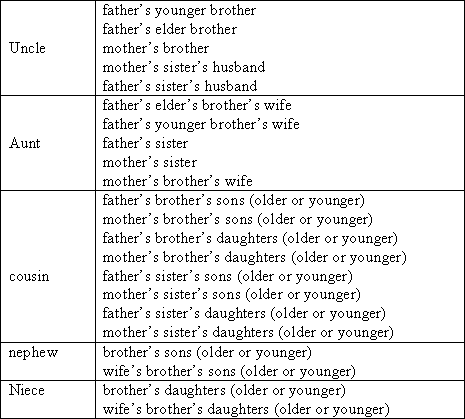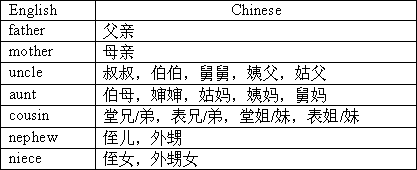|
|
|
¢¢
Semantic Field
¢¢¢ Definition
6.6. Semantic Field
The
massive word store of a language like English can be conceived of as composed
around a number of meaning areas, some large, such as 'philosophy' or
'emotions', others smaller, such as 'kinship' or 'colour'. Viewing the
total meaning in this way is the basis of field theory. The German linguist
Trier saw vocabulary as 'an integrated system of lexemes interrelated
in sense'. Therefore, the 'words of language can be classified into semantically
related sets or fields. For example, apple, pear, peach, apricot, date,
mango, pineapple, orange, lemon, etc make up the semantic field of
'fruits'. Celery, lettuce, leek, cucumber, potato, spinach, tomato,
egg-plant, carrot and so on form the field of 'vegetables'. The field
of 'colours' comprise words like red, orange, yellow, green, white,
black, blue, purple, pink, etc.
According
to Trier's vision of fields, the whole vocabulary can be divided up into
fields. Roge's Thesaurus was a good example. He used a scheme of
universal concepts as a framework and listed together the words which
share the same concepts. Longman Lexicon of Contemporary English
too was compiled on this principle. It describes some 15,000 items, classified
into fourteen semantic fields of a practical everyday nature. Each semantic
field consists many sub-fields. For example, under family relations are
father, mother, son, daughter, brother, sister, and under other
family relations are found uncle, aunt, nephew, niece, cousin.
There is a field concerning family in the past or future: ancestor,
forefather, forebear, descendant, generation.
¢¢¢ Difference
between fiend and hyponymy
Words
in each field are semantically related and define one another. It is a
general belief that the meaning does not exist in the word itself, but
it rather spreads over the neighbouring words, because the neighbouring
words identify the semantic field and help pin down the meaning. For instance,
rose operates in contrast with tulip and dahlia in
one semantic field, so it is a flower. In contrast with red and
purple in another, it becomes a kind of colour. Take the word captain.
'He is a captain' does not mean very much until we know the semantic field
in which captain operates. We know what captain means in
the merchant service, in the navy or in the army only when we know whether
his subordinate is called mate, commander or lieutenant.
Compare:
orange:
orange:
red, blue, yellow (colour)
orange:
pear, apple, peach (fruit)
orange:
coke, pepsi, seven-up (drink)
captain
Ship
crew Navy Army
captain
captain captain
first
office/mate commander lieutenant
Ship
crew Navy
Army
captain
巻海 captain
貧丕 captain
貧両
first
office 寄険 commander
嶄丕 lieutenant
嶄両
(mate)
The
vocabulary of a language is in constant change; old items drop out, new
items come in, and as the new replace the old, so the internal relations
of the whole set alter. A simple and familiar example of this is one corner
of the personal address system in modern English. Twenty years ago, the
semantic space was divided up as in:

The same semantic field has now reorganized itself as in:

¢¢¢
Implications
Another
point worth noting is that the semantic field of the same concept may
not have the same members in different languages. Take the kinship terms.



This poses a problem in language learning. When Chinese learners of English
come across terms like uncle or aunt or cousin, they
are usually puzzled over the exact referent. Even brother and sister
which cover both elder brother and younger brother, and elder sister and
younger sister, for each of which there is a separate term in Chinese,
often become a riddle and give Chinese readers headaches. Therefore, the
comparative study of semantic fields in different languages has held the
interest of linguists and has proved helpful to some extent in foreign
language learning.
|